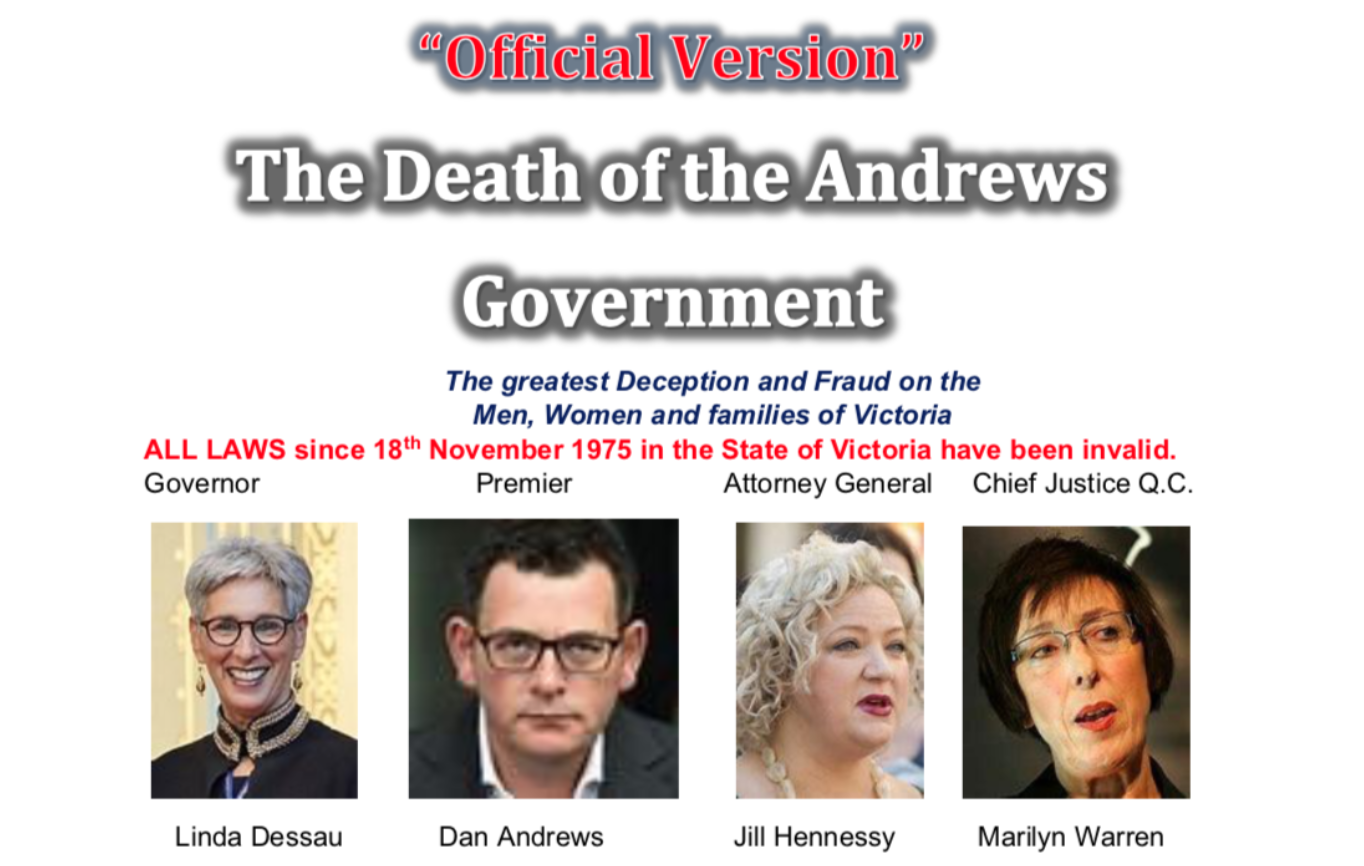One of Melbourne’s top silks believes the validity of the curfew imposed on the city’s residents is in doubt because it appears to have been imposed for a purpose that was never authorised under state law.
Michael Wyles QC identified a possible flaw in the legal basis for curfew after the state Opposition asked him to consider the implications of public statements by Premier Dan Andrews and chief health officer Brett Sutton.
Public health legislation permits orders to be made by health officials to protect public health. But after Sutton revealed he had not sought a curfew, Andrews said the measure had been “about enforcement”.
-
When asked if the curfew had been requested by police, Andrews said this week that decisions were made on advice from a range of authorities. “Some of that’s public health advice, some of its law enforcement advice,” he said.
The Wyles opinion on the curfew, which is still being settled, is understood to point out that assisting law enforcement is not a permissible basis for emergency health orders.
“There is no legal basis for the curfew. It is invalid and everyone can ignore it because the direction is not, according to what Sutton said yesterday, for the purpose of eliminating or reducing the risk of COVID,” Wyles told The Australian.
This coincides with similar concern about the legal basis of another aspect of the state government’s tactics — last week’s arrest of Ballarat woman Zoe Buhler after she used a Facebook post to promote an anti-lockdown protest.
That incident exposed Victoria’s crackdown to ridicule after video was relayed around the world showing Buhler — pregnant, distressed and clad in pyjamas — being handcuffed in front of her children.
Police assistant commissioner Luke Cornelius later admitted police had ”stuffed the optics”. But it is beginning to look as though the Andrews government has had much the same effect on the law.
Wyles has produced a second opinion that means Facebook posts are also beyond the reach of emergency health orders. That could be a gift for the team led by Stuart Wood QC that has stepped forward to help this woman.
In the second opinion, commissioned by the Rule of Law Institute of Australia, Wyles writes that those who are otherwise restrained by the stay-at-home directions “are not restrained by those directions from publishing statements and making communications, including on social media, being a communication about the lockdown and its impact on individuals and the community”.
Such statements could be made without acting unlawfully, it says.
The Rule of Law Institute had asked Wyles whether emergency directions issued last month prevent people from publishing communications on social media about the lockdown.
His opinion says such statements on social media can be made by people otherwise restrained by the “purported” directions “without causing those Australians to refuse or fail to comply with the directions, that is without acting unlawfully, or in common parlance, ‘illegally’.”
Any further direction purporting to prevent people communicating about the lockdown on social media would be “prima facie invalid”.
Premier Daniel Andrews and Chief Health Officer Brett Sutton arrive for a press conference in Melbourne to discuss the latest COVID-19 figures. Picture: NCA NewsWire/ David Crosling The directions issued last month that placed people under lockdown were made by Dr Finn Romanes, a government official who is described in the Stay at Home Directions (Restricted Areas) No 14 as “deputy public health commander”.
“The power purported to be conferred on Dr Romanes to make the 16 August directions was limited to directions having the purpose of eliminating or reducing a serious risk to public health.”
Communications about the lockdown and its impact on individuals and the community could not pose a risk to public health, his opinion says.
Wyles writes that the power exercised by Romanes to make directions could be conferred on him by chief health officer Brett Sutton. And Sutton could only confer such authority if he believed it was necessary to eliminate or reduce the serious risk to public health.
That purpose limits the power that Sutton could confer upon Romanes. And that, in turn, “militates against Dr Romanes having any power to make a direction which might prohibit or purport to make illegal publication of a statement on social media being a communication about the lockdown and its impact on individuals and the community”.
Opposition legal affairs spokesman Ed O’Donohue wrote to Andrews on September 10 urging him to “allay the growing community concerns that you and your government may have enacted some of the current restrictions in an unlawful manner”.
“It is imperative you urgently release any legal advice you have from the Solicitor-General or other sources to confirm the legality of your government’s curfew,” O’Donohue writes.
He points out that while Andrews had reportedly said he had instigated the curfew under the state of disaster, “the curfew is a direction pursuant to the state of emergency by the chief health officer”.
O’Donohue included a copy of the Stay at Home Directions (Restricted Areas) (No 14) which imposes the current curfew and which does not expire until midnight on September 13.
That document shows the directions were issued by Romanes under provisions of the Public Health and Wellbeing Act, which was introduced by Andrews in 2008 when he was health minister.
When introducing the legislation discussing the management of infectious diseases, Andrews told parliament: “The bill states that ... the measure that is the least restrictive of the rights of the person should be chosen.”
If you can spare a few dollars for the creators of this website to continue their research to bring you more great content, any amount, no matter how great or small, would be greatly appreciated.



